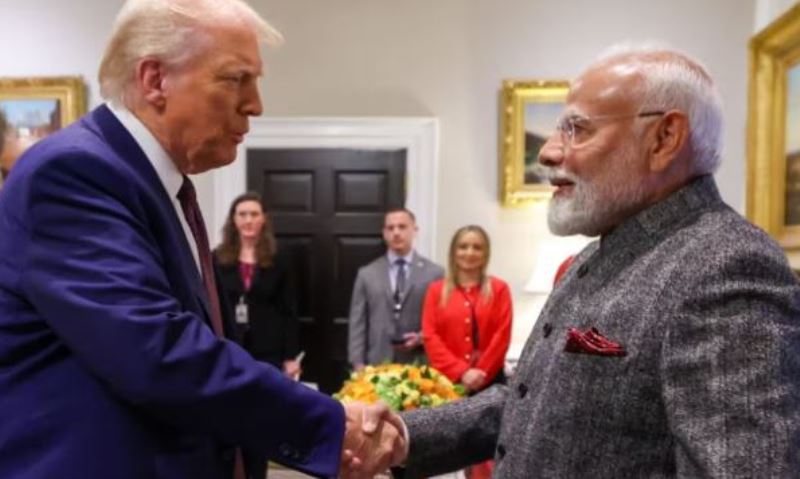President Donald Trump has again asserted that Prime Minister Narendra Modi personally phoned him to halt the recent India–Pakistan war, claims New Delhi continues to flatly deny. Trump’s latest retelling, now repeated more than 60 times, links the alleged call to his threat of imposing a 350% tariff on both countries, which he says forced an end to hostilities and averted a nuclear catastrophe that could have sent “nuclear dust over Los Angeles.”
India has repeatedly dismissed any suggestion of a call between the two leaders during or after the four-day conflict, calling the claim fictitious.
Trump’s remarks surfaced hours after the release of a two-page analysis in the 2025 Annual Report to Congress by the U.S.–China Economic and Security Review Commission (USCC). The bipartisan body credited Pakistan’s battlefield “success” during the brief clash to Chinese weaponry—highlighting Beijing’s expanding military reach and its strategic use of the conflict for geopolitical advantage.
According to the report, 82% of Pakistan’s arms imports from 2019–2023 came from China, and the four-day engagement gave Beijing’s systems a global showcase. It notes the combat debut of HQ-9 surface-to-air missiles and Wing Loong II drones, which it says intercepted Indian incursions.
“While characterizing this conflict as a ‘proxy war’ may overstate China’s role as an instigator, Beijing opportunistically leveraged the conflict to test and advertise the sophistication of its weapons,” the report states, adding that this aligns with China’s border tensions with India and its global defense ambitions.
The document also highlights extensive pre-war Sino-Pakistani drills—Warrior-VIII land exercises in October 2024 and AMAN-2025 naval maneuvers in February—which boosted joint preparedness for contested airspace.
Even as the USCC underscored China’s expanding military influence, Trump—who frequently touts U.S. defense superiority—has been accelerating American arms diplomacy. This week, his administration approved a $93 million sale of Javelin anti-tank systems and Excalibur precision projectiles to India, a relatively modest transaction compared to multi-billion-dollar packages planned for Saudi Arabia. Washington is also pushing to reduce Pakistan’s reliance on Chinese weapons.
The report further accused China of launching a post-ceasefire disinformation campaign aimed at undermining Western defense manufacturers. Chinese state-linked actors allegedly circulated AI-generated deepfakes and doctored videos showing French Rafale jets malfunctioning. According to the USCC, this misinformation contributed to Indonesia’s suspension of an $8.1 billion Rafale deal in June 2025, shifting Jakarta’s interest toward China’s J-35 stealth fighter.
“The conflict drew global attention to the China-Pakistan defense nexus,” the report warns, adding that escalating military entanglements in a nuclear flashpoint carry significant regional risks.
On the Sino-Indian front, the commission noted a continued “asymmetry” in the priority each nation places on resolving their long-standing border dispute. India, it said, increasingly acknowledges the severity of the threat, moving away from its earlier perception of the issue as minor “acne on the face,” particularly as China’s military capabilities expand.
“It remains to be seen whether China’s and India’s 2025 commitments are a short-term function of India’s desire to hedge amid turbulent U.S. trade negotiations or mark a deeper shift toward normalization,” the report added, referring to the Modi-Xi meeting in Tianjin.

